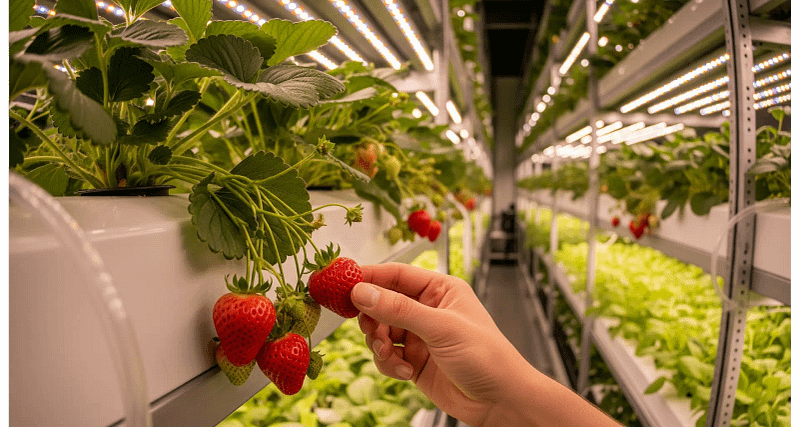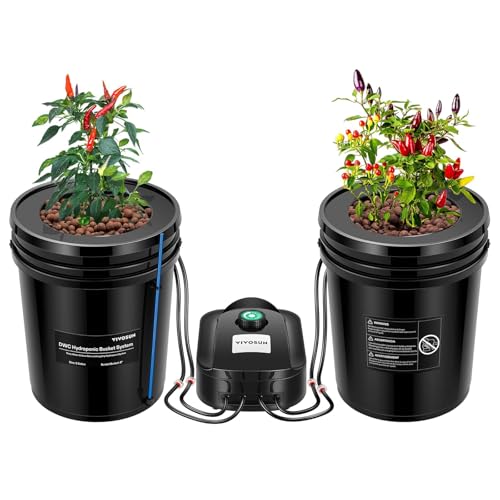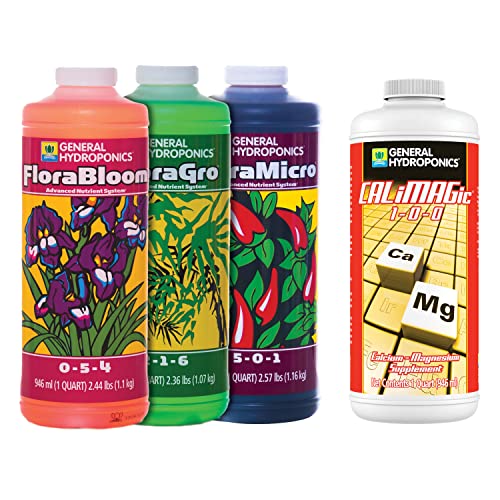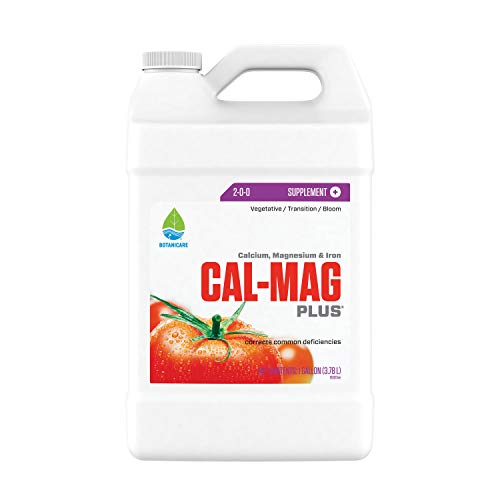Listen, fellow fruit fanatics, you and I both know the secret shame of biting into a “fresh” grocery store tomato in the dead of winter. That pale, mealy orb with all the flavor of wet cardboard? Yeah. I’ve been there. My early gardening attempts often felt like a cruel joke—a lot of back-breaking work for what felt like subpar results. But then I discovered hydroponics. And let me tell you, when you pull a sun-ripened strawberry from your indoor garden in January, you’ll know exactly what I mean by a “berry explosion.” This isn’t just about growing food; it’s about reclaiming flavor, defying seasons, and making every single harvest a moment of pure, juicy victory. I’ve spent over a decade perfecting these methods in my commercial fruit farm, and I’m ready to share my field-tested secrets with you.
LEGAL DISCLAIMER: All product links and cultivation advice in this guide are intended for educational and novelty research purposes only. The germination and cultivation of certain plants, especially those that are federally or locally restricted, may violate local laws. You are responsible for consulting with and adhering to all local, state, and federal regulations regarding your cultivation activities. We assume zero liability.
System Wars: Real Grower Showdowns
Picking the right system is like choosing the right partner for a dance. You need to know what you’re trying to grow and what your space allows. My journey started with a catastrophic failure—I tried to grow tomatoes in a system designed for lettuce. Greenhouse confession #1: I lost 50 tomato plants because their roots suffocated in a shallow nutrient film. I cried, a little. But from that failure came a simple truth: matching the system to the crop is non-negotiable.
DWC Dominance (Peppers & Tomatoes)
For big, thirsty fruiting plants like peppers and tomatoes, there’s nothing quite like Deep Water Culture (DWC). This system is straightforward: your plant’s roots are suspended in a reservoir of nutrient-rich, oxygenated water. It’s like a permanent spa day for their root systems, and they absolutely love it. Why DWC for these champs? Because they need constant, unhindered access to water and oxygen to produce heavy fruit. The roots get to grow wild and free, building a massive network capable of supporting a crazy amount of growth above the surface.
I recommend DWC for peppers and tomatoes because their roots are heavy feeders and their growth cycle is long1. The reservoir acts as a huge buffer, so minor fluctuations in temperature or pH won’t immediately spell disaster. You’ve got some wiggle room, which is great for beginners. I’ve seen bell pepper plants grow for over a year in these things, producing fruit non-stop.
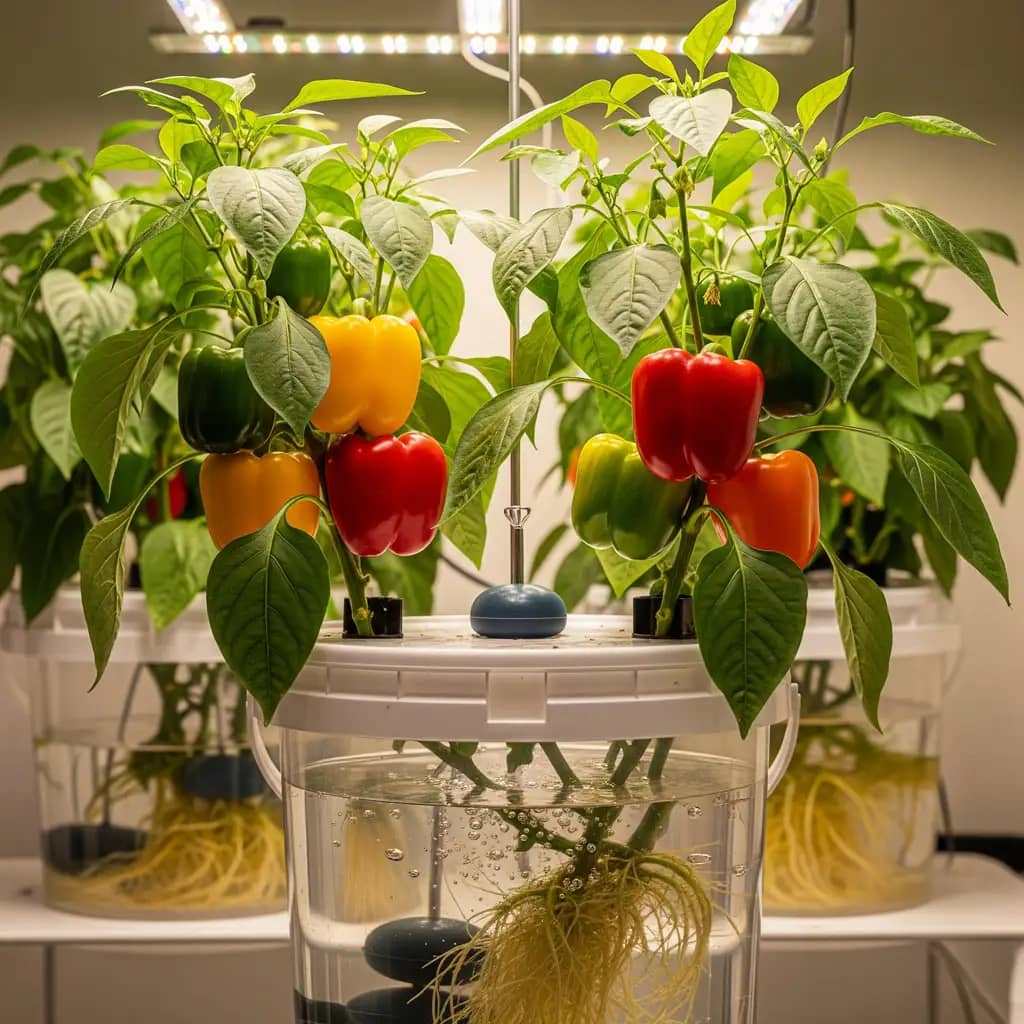
Vertical Victory (Strawberries & Eggplants)
If you’re short on horizontal space but still dream of a bountiful harvest, vertical towers are your ticket to ride. These systems stack plants one on top of the other, with a nutrient solution pumped from a bottom reservoir to the top, where it trickles down over the roots of each plant. This is my go-to for strawberries.
Strawberries, in particular, are a match made in heaven for vertical setups. They have small root systems and benefit from excellent drainage, which the vertical trickling provides. Plus, keeping them elevated helps prevent pests and fungal diseases from creeping in, which are common issues when they’re grown low to the ground.
Greenhouse confession
I once spent a whole summer battling gray mold on my strawberry plants. It was a brutal, heartbreaking war. Vertical farming systems solved that problem for me, almost entirely2. For crops like strawberries and eggplants, a vertical system means more plants per square foot and healthier plants all around.
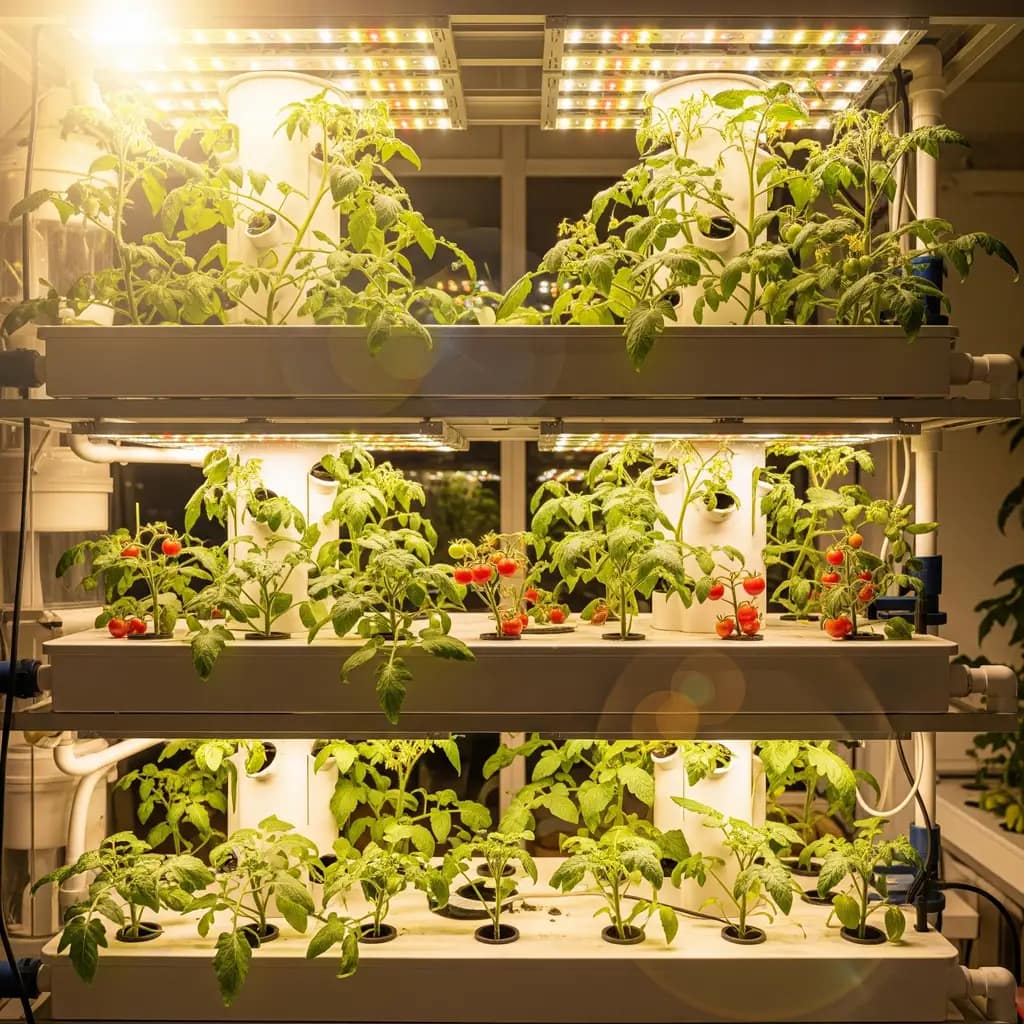
Smart Gardens Demystified (AeroGarden vs Gardyn)
Let’s talk about the countertop heroes. These kits are all-in-one solutions that automate everything from lighting to nutrient delivery. They’re perfect for urban growers or anyone who wants a small, low-maintenance harvest.
- AeroGarden Bounty: This is a fantastic choice for cherry tomatoes and peppers. The built-in lights and auto-dosing make it a set-it-and-forget-it system. It’s a great way to dip your toes into hydroponics without committing to a large, complex setup. A lot of home growers, I’ve found, swear by this system for its reliability and consistent, if small, yield.
- Gardyn: For a more tech-savvy gardener, this one’s a beast. It uses AI to monitor your plants, telling you when they need water or nutrients. For vertical crops like strawberries or leafy greens, it’s a powerhouse. It costs more, but the automation and plant density can lead to impressive returns for a small footprint.
LED Lights: The Fruiting Spectrum Secret
Plants don’t just need light; they need the right kind of light. I’m talking about a specific color spectrum that coaxes them into their most productive phases. The key is understanding that “full spectrum” isn’t just one thing. It’s a delicate balance of colors, especially red and blue, that act as cues for your plants.
Red Light = Sugar Rush
This is a deep-dive moment, so grab a pen. The secret to sweeter, heavier fruits isn’t just good nutrients—it’s light, specifically in the 660nm range. When a plant gets enough light in this red wavelength, it signals it to focus its energy on flower and fruit development.
This light encourages the production of sugars, which translates directly to a sweeter, more flavorful fruit. Think of it as a “sugar rush” for your strawberries and a “flavor explosion” for your tomatoes. It’s the difference between a decent tomato and one that tastes like a summer afternoon.
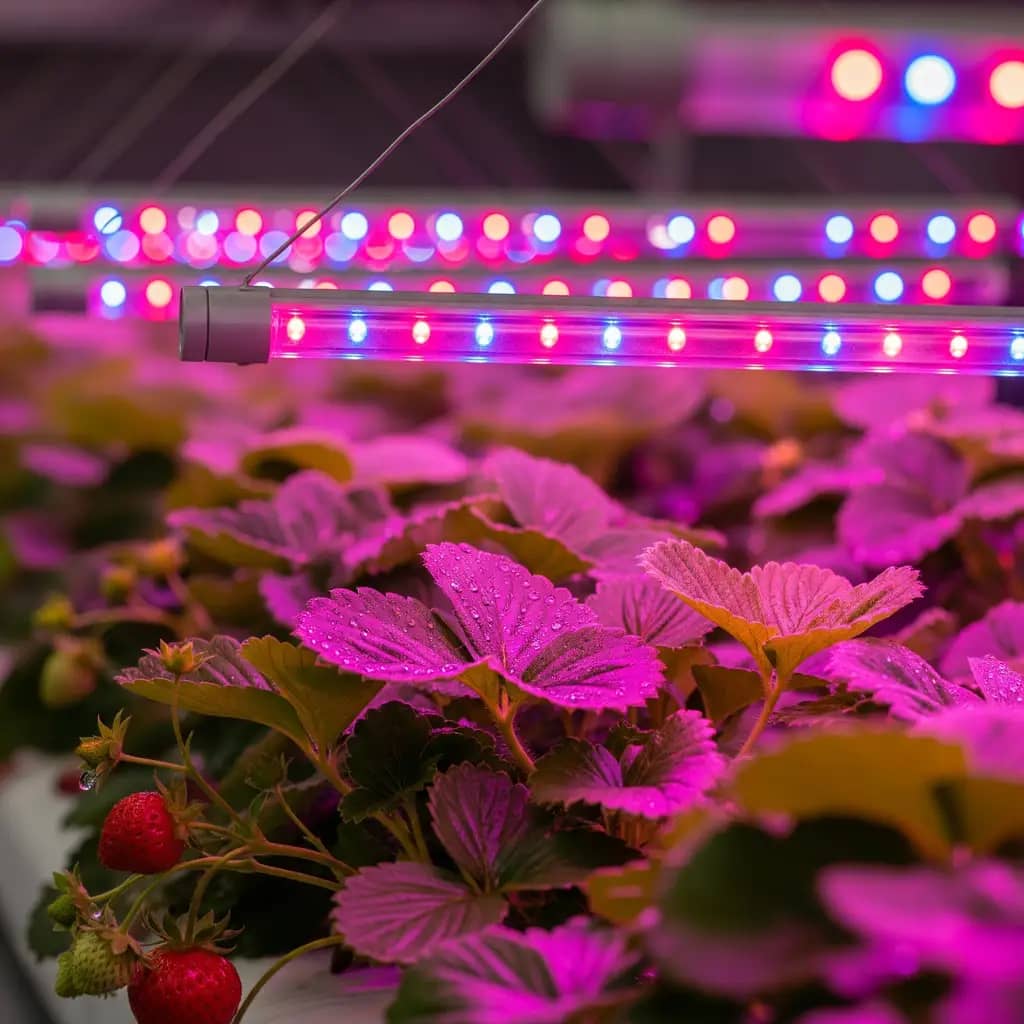
Budget Beast Mode (KingLED vs Spider Farmer)
When I first started, I thought I had to mortgage my house to get a good grow light. That’s simply not true anymore.
- KingLED KP1000: For a home grower looking to start a small tomato or pepper plant, this is a solid choice. It’s a 100W light with dedicated veg and bloom modes, which is a fantastic feature for a light at this price point. The 640 built-in LEDs provide a good amount of light without breaking the bank. It’s a no-frills, get-the-job-done kind of light.
- Spider Farmer G4500: The G4500 is a huge step up for serious hobbyists. With 320W of power, it’s perfect for a 2x4ft grow tent. It’s app-controlled, so you can set dimming and timers right from your phone. This light gives you the power and control you need to produce serious fruit yields without stepping into the ultra-premium category.
Premium Powerhouses (HLG & Mars Hydro)
If you’re running a serious operation and need professional-grade equipment, you’ll be looking at these brands.
- HLG (Horticulture Lighting Group): These are the gold standard for many commercial growers. Their lights are incredibly efficient and durable. They’re not cheap, but they are an investment that pays off in yield and longevity.
- Mars Hydro FC-E8000: This is another powerhouse for a large grow space. With 800W of power and a massive footprint, this light is designed to replace traditional HPS lights with a far more efficient and customizable LED spectrum. When you’re ready to fill up a room with tomato plants, this is what you go for.
Nutrient Alchemy for Sweeter Fruit
Nutrients are the lifeblood of your plants. In soil, they forage for what they need. In hydroponics, you are the provider. Your job is to be a master chef, giving them a perfectly balanced meal at every stage of their life. Too much nitrogen and you get a massive plant with no fruit. Too little and you get sad, yellowing plants and a disappointing harvest. The key is to switch from a “grow” formula to a “bloom” formula at the right time.
Bloom-Boosting Formulas (GH Flora vs Fox Farm)
General Hydroponics Flora Series Performance Pack
This is a classic for a reason. The three-part system (Micro, Grow, Bloom) lets you mix custom ratios for every stage. It’s the most versatile option out there, and once you get the hang of it, you can dial in a perfect recipe for your plants. It’s the standard that many of us started with, and still rely on.
- The Flora Series is a hydroponic-based nutrient system that helps fulfill your plants’ nutrient needs at every stage of …
- Nutrients included in the Series are FloraMicro, FloraBloom, and FloraGro
- FloraMicro: contains nitrogen and calcium, as well as trace minerals, which are essential for a comprehensive hydroponic…
Why Growers Love It:
- Complete Nutrition: Three-part system provides precise control over each growth phase
- pH Stability: Buffered formulation minimizes pH drift in reservoir
- Strain Specific: Feeding charts available for various cannabis genetics.
Room for Improvement:
- Mixing Order: Requires specific mixing sequence to prevent nutrient lockout.
- Supplement Needs: May require additional PK boosters for heavy-feeding strains.
Bottom Line for Growers: The industry standard for reliability. Perfect for growers who want predictable results harvest after harvest. Check Price on Amazon.
FoxFarm Grow Big, Big Bloom, Tiger Bloom Pack
This is another fantastic, highly regarded option. It’s designed to be simple but effective. With Big Bloom, Grow Big, and Tiger Bloom, you’re set up for the entire cycle. The secret sauce here is the rich mix of natural and organic ingredients that lead to some seriously flavorful fruit.
- A POWER TRIO TO NOURISH YOUR PLANTS: This liquid fertilizer bloom bundle makes plants receive nutrition all season for b…
- GROW BIG TO SPARK LUSH VEGETATION: Kickstart wit grow fertilizer for vegetable garden, designed to promote lush vegetati…
- POWERS UP BUDS WITH TIGER BLOOM: Activate the strength of fruit and bloom booster plant food for flowers when buds begin…
The Green Thumb Upside:
- Stage-Specific Feeding: Separate formulas for vegetative growth (Grow Big), root and bloom development (Big Bloom), and fruiting (Tiger Bloom) simplify the feeding schedule.
- Enhanced Flavor Profile: Many growers swear that organic-based nutrients like FoxFarm enhance the complex flavors and sugars in tomatoes and peppers.
- Ease of Use: Liquid formulation is easy to measure and mix, making it less intimidating for beginners than powder systems.
Grower’s Notes:
- Potential for Clogging: The organic matter in Big Bloom can clog small pumps and drippers; best used in drain-to-waste or hand-watered systems.
- Dilution Needed: The recommended strength on the bottle is often too “hot” for peppers; most growers start at half-strength.
The Seedling Lowdown: A fantastic “set and forget” nutrient system for growers in soil or coco coir who prioritize flavor and simplicity over ultra-high yields. See Latest Discount on Amazon.
pH/EC Mastery Cheat Sheet
This is where the magic happens, and where amateurs give up. The pH of your nutrient solution dictates which nutrients your plants can absorb. Think of it as a key for unlocking minerals. An incorrect pH is like a locked door—the nutrients are there, but the plants can’t access them. The EC (Electrical Conductivity) or PPM (Parts Per Million) tells you the concentration of those nutrients.
Ouch moment #1: I once tried to wing it with a batch of cherry tomatoes. I completely neglected to check the pH for two weeks, and by the time I did, it was so high that every single plant was starving. Their leaves were a sad, mottled yellow and their fruit production stalled entirely. The pH had become so alkaline they couldn’t absorb iron or magnesium. Lesson learned: pH is your best friend.
| Parameter | Recommended Range | Why It Matters | Pro Tip |
| pH | 5.5-6.5 | Controls nutrient absorption. Stay within this range! | For fruiting plants, let it drift slightly higher then adjust down. This helps with overall nutrient uptake. |
| EC | Varies by crop | Measures total nutrient concentration. Too high = toxicity. Too low = starvation. | Use a good EC meter and track changes daily. Adjust by adding water (EC too high) or more nutrient solution (EC too low). |
Bluelab Combo Meter for pH, Temperature & Conductivity in Water
A professional-grade handheld meter that simultaneously monitors pH, conductivity (EC/TDS/PPM), and temperature in hydroponic solutions, ensuring precise nutrient management for optimal plant health.
- Monitor 3 parameters in water: Conductivity (TDS) level to ensure plants get a balanced feed, pH up and down, and temper…
- This hydroponics meter has ATC that provides consistent reading regardless of any fluctuations in temperature; pH probe …
- Combine with Bluelab meters and controllers for full indoor garden nutrients monitoring in water and soil; pH probe requ…
Why Growers Love It:
- Triple-Parameter Monitoring: Tracks pH, EC/TDS/PPM, and temperature simultaneously, eliminating the need for multiple devices and ensuring perfect nutrient balance.
- Lab-Quality Precision: Features automatic temperature compensation (ATC) and a double-junction pH probe for accurate readings despite environmental fluctuations.
- User-Friendly Design: Includes a backlit display, customizable units (EC, CF, PPM 500/700), and auto-off functionality to conserve battery life.
Room for Improvement:
- Probe Care Required: The pH probe requires regular calibration and proper storage (storage cap included, but care kit sold separately) to maintain accuracy.
- Initial Investment: Higher upfront cost compared to basic meters, but justified by long-term reliability and precision.
Bottom Line for Growers:
The industry standard for serious hydroponic growers. Its lab-grade accuracy and durability make it indispensable for avoiding nutrient lockout and maximizing yields. Check Price on Amazon.
Seed to Harvest: Pro Genetics Guide
Listen, even with the world’s most perfect system and the best light, bad genetics will only get you so far. Starting with a vigorous, high-yielding strain or variety is the final piece of the puzzle. I’m a firm believer in the phrase “you get what you pay for” when it comes to seeds and clones.
Bare Root Crowns vs Seeds (Strawberry Speed Test)
When it comes to strawberries, you have two choices: seeds or bare root crowns. Greenhouse confession #3: I tried growing strawberries from seed once. It took me nearly a year of coddling and caring before I got a single, pathetic berry. I almost quit gardening entirely. Don’t be like me. Pro tip: Skip the seeds unless you’re a masochist or doing a long-term experiment.
Bare root crowns are the way to go. They are dormant plants with their roots and a tiny crown of leaves. They’ll start growing much faster and produce a substantial crop in their first year. You can buy them in bulk, and they’re a fraction of the cost of a full plant.
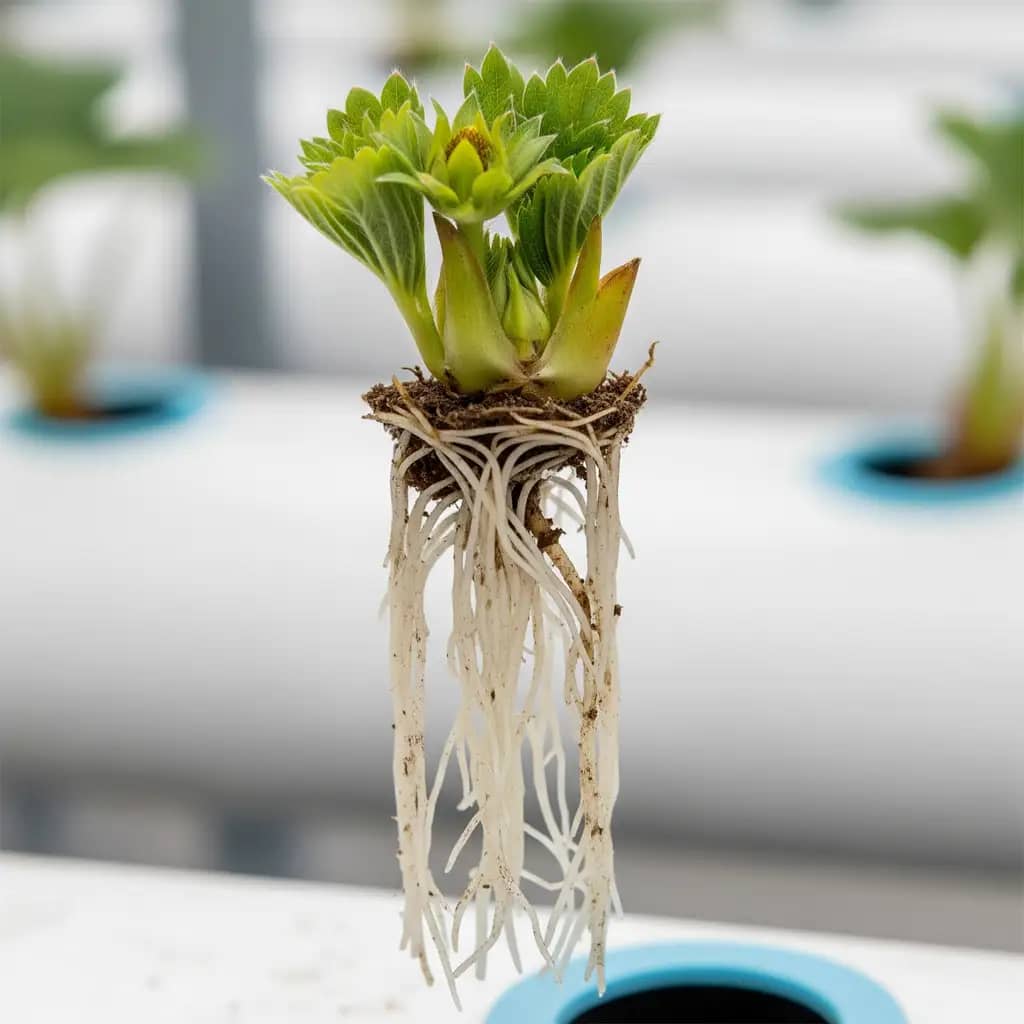
Inbloom Strawberry Kit: For beginners, a kit like this offers convenience. It includes bare root crowns, pods, and nutrients, simplifying the entire process. Look for kits that use non-GMO genetics and boast a high germination rate.
Tomato/Pepper Varieties That Don’t Suck
For a fantastic harvest, start with varieties known for performing well in a hydroponic setup. These plants have been specifically bred for compact growth, high yield, and disease resistance. You’ll thank me when you’re not fighting a losing battle against a fungus.
- Cherry Tomatoes: Cherry tomatoes, like ‘Sweet 100’ or ‘Sun Gold’, are perfect for a home setup. They’re vigorous, produce a crazy amount of fruit, and their growth is easy to manage.
- Heirloom Tomatoes: These can be tricky, but varieties like ‘Brandywine’ and ‘Cherokee Purple’ are worth the effort. The flavor is unparalleled. They require more light, more space, and a bigger nutrient load, but the payoff is worth it.
- Peppers: For peppers, ‘Jalapeño’ and ‘Habanero’ are fantastic choices. Their compact size makes them ideal for vertical gardens. For bell peppers, ‘Jefe’ and ‘Helios’ are robust varieties that deliver consistent fruit.
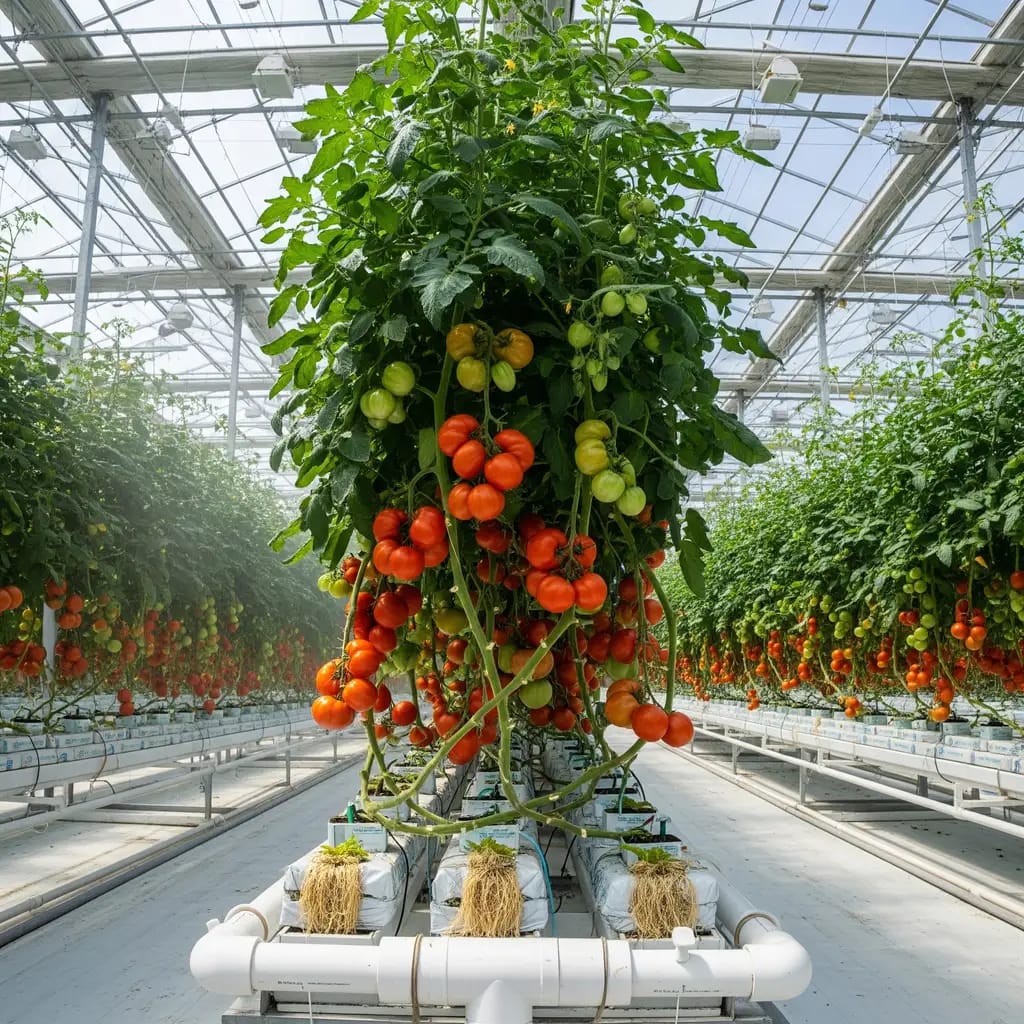
Affiliate Toolbox: My 2025 Fruit Arsenal
This is my curated list of products I’ve personally used and can vouch for. I wouldn’t recommend them if they hadn’t made a difference in my operation.
LAPOND Hydroponics Growing System Kit, 108 Plant Sites
A large-scale NFT (Nutrient Film Technique) system with dark blue light-blocking tubes, ideal for strawberries and leafy greens.
- Upgraded Version: The hydroponic growing system kit features easy assembly, thicker legs for better load-bearing; it com…
- Automated Watering System: With an anti-dry-burning water pump and adjustable timer for optimal water circulation. The f…
- High Yield and Quality: Soilless cultivation with nutrient film can meet the production potential of crops; Compared wit…
Why Fruit Growers Love It:
- Massive Capacity: 108 sites support multiple fruit plants like strawberries or peppers in a compact vertical design.
- Light Prevention: Blue tubes prevent algae growth, maintaining cleaner nutrient solutions.
- Complete Kit: Includes pump, timer, grow sponges, and all necessary accessories for immediate setup.
Things to Consider:
- Space Requirements: The 3-layer system needs adequate vertical space (approximately 5-6 feet tall)
- Pump Noise: The included 7W pump may produce audible hum (approximately 45 dB)
Bottom Line for Growers: Perfect for serious growers wanting to maximize strawberry or herb production in limited spaces. The NFT design provides excellent oxygenation for fruit development. Check Price on Amazon.
VIVOSUN 5-Pack 5-Gallon Bucket Lid with Net Pots
Professional deep water culture (DWC) system ideal for larger fruit plants like tomatoes and peppers.
- DWC Bucket +Top Drip Kit: The upgraded hydroponic system incorporates a unique top drip irrigation design, facilitating …
- Powerful Air Pump: Air output: 4*4 L/min (adjustable); Voltage: AC110-120V/60Hz; Power: 8W; The air pump and air stones …
- Grow Faster, Harvest More: The upgraded DWC system accelerates plant growth and increases yield potential; With independ…
Top-Shelf Features:
- Root Space: 5-gallon buckets provide ample room for extensive tomato or pepper root systems.
- Durable Construction: Food-grade buckets with light-proof lids prevent algae growth.
- DIY Flexibility: Build a custom system for specific fruit plants’ needs.
A Word of Caution:
- Water Changes: Large buckets can be heavy and cumbersome to change nutrient solution.
- Aeration Needs: Requires separate air pump and stones (not included).
Who This Is For: Growers wanting to cultivate larger fruit plants like tomatoes and peppers with maximum root oxygenation. See Latest Discount.
General Hydroponics FloraSeries Performance Pack
Complete 3-part nutrient system optimized for fruit production in hydroponic systems.
- Fulfill your plants’ specific nutrient needs while keeping them happy with the General Hydroponics FloraSeries and CALiM…
- FloraMicro is rich in nitrogen, calcium, and chelated micronutrients to help support fast-growing crops during all growt…
- FloraGro is blended with nitrogen phosphorus, potassium, and magnesium for support of structural and foliar growth
Root-Level Benefits:
- Fruit-Specific Formulation: Higher potassium formulation supports flowering and fruiting stages.
- pH Stability: Buffered solution maintains stable pH between 5.5-6.5 for optimal nutrient uptake.
- Proven Results: Trusted by commercial growers for consistent fruit production.
Not a Perfect Fit For:
- Organic Purists: Contains synthetic minerals rather than organic ingredients.
- Learning Curve: Requires understanding of different mixing ratios for growth stages.
Our Grow-O-Meter Says: The gold standard for hydroponic nutrient systems, especially for fruiting plants like tomatoes and strawberries. Check Price on Amazon.
Spider Farmer SF-4000 LED Grow Light
Full-spectrum LED light with Samsung LM301B diodes, covering 4’x4′ flowering area.
- Cutting-Edge LED Chips for Unrivaled Performance:Introducing the Samsung LM301H EVO LEDs. Boasting an impressive efficie…
- 5-Year Warranty: Our LED Plant Lights are often copied but will never have our quality or commitment, we provide 5 years…
- Ideal For All Growth Stages: Excellent full spectrum- white, blue, red and IR (3000K, 5000K, 660nm and IR 760nm, IR is d…
Root-Level Benefits:
- Energy Efficient: Draws 450W while replacing 600W HID systems – 40% electricity savings
- Full Spectrum: 3000K, 5000K, 660nm, and 730nm LEDs mimic ideal sunlight spectra
- Low Heat Output: Samsung diodes generate minimal heat – reduces cooling requirements
Not a Perfect Fit For:
- Canopy Penetration: May struggle with canopies deeper than 24 inches
- Initial Investment: Higher upfront cost than HID equivalents
The Final Verdict: The perfect balance of efficiency and performance for serious home growers. Daisy-chain capable for expansion. Check Price on Amazon.
AC Infinity CLOUDLINE PRO T4
- Designed to ventilate hydroponic grow rooms, transfer heating/cooling, cool AV closets, and exhaust odors.
- Dynamic temperature and humidity programming, with timers, grow cycles, scheduling, minimum speed.
- Remotely connect to our WiFi app to access advance programs, view climate data, and set automation.
- ROI: Prevents crop loss from mold/mildew — saves entire harvests.
- Fixes: High humidity, bud rot, and ruined crops.
- Why I’m hooked: Keeps my tent environment safe and stable. It’s basically insurance for humid climates.
- Drawback: Adds some noise, but it’s worth protecting a full harvest.
Botanicare Cal-Mag Plus, 1-Gallon
A concentrated calcium, magnesium, and iron supplement designed to prevent and correct nutrient deficiencies in hydroponic cannabis systems.
- Highly fortified calcium, magnesium, and iron plant supplement formulated to correct common deficiencies
- Supplement your existing nutrient program with Cal-Mag Plus
- To Use: Mix well and use with every watering, as needed, for enhanced growth apply as a foliar spray
Why Growers Love It:
- Defense Against Deficiencies: Specifically formulated to prevent and correct calcium and magnesium deficiencies, which are common in hydroponic cannabis grows and manifest as rusty spots and crispy leaf tips .
- Enhanced Absorption: The chelated form of nutrients ensures optimal uptake by plants, even in fluctuating pH conditions .
- Versatile Use: Can be used in both hydroponic and soil-based systems, and is compatible with most nutrient lines .
Room for Improvement:
- Concentrated Formula: Requires careful measurement to avoid overuse, which can lead to nutrient lockout .
- Price Point: Higher cost per ounce compared to some generic Cal-Mag supplements, but the quality justifies the price .
Bottom Line for Growers: An essential insurance policy for hydroponic cannabis growers. I use it with every feeding to prevent the common deficiencies that plague so many gardens
Troubleshooting Fruit Disasters
Every single grower, no matter how experienced, has had a moment where they look at their plants and say, “What the heck happened?” I’ve been there, staring at a sad, yellowing crop with a feeling of dread. But I’ve learned that almost every problem has a solution.
Fruit Yield Cheat Sheet
| Crop | Ideal System | Light Hours | EC Range (mS/cm) | Harvest Time |
| Tomatoes | Dutch Bucket | 16+ | 2.0-5.0 | 60-80 days |
| Peppers | DWC | 14-16 | 1.4-1.75 | 70-90 days |
| Strawberries | Vertical Tower | 12-16 | 1.2-1.6 | 30-45 days |
| Cucumbers | Ebb & Flow | 12-18 | 1.8-3.0 | 7-10 weeks |
| Microgreens | NFT | 12-16 | 0.8-1.2 | 1-3 weeks |
Root Rot Rescue Protocol
Root rot is the silent killer of hydroponic gardens. Your plants look fine one day, and the next, they’re dead. The cause is usually a lack of oxygen in the water, which allows a pathogenic fungus called Pythium to take over.
- The Red Flags: Brown, slimy, or mushy roots that smell foul. The plant itself will look droopy and yellow, almost like it’s being overwatered.
- The Rescue Mission: When you see it, act fast. First, trim away all the affected roots with a clean pair of shears. Next, dump your nutrient solution and replace it with a fresh batch. Add a hydrogen peroxide solution (3% food-grade). I recommend a ratio of 10-15 ml per gallon of water. This will help kill the fungus and oxygenate the roots. Increase the amount of dissolved oxygen in your reservoir with an air pump or air stone. After a few days, your healthy roots should start to grow back.
The Problem With PPM/EC Meters
Ouch moment #2: I once spent $30 on a cheap PPM meter from Amazon. It worked fine for a week, and then one day I noticed my plants were all struggling. I checked the meter, and it said my solution was perfect. I was so confused! Turns out the meter had completely failed. I was literally flying blind. Lesson learned: invest in a quality meter, like a Bluelab. It’s the most important tool you have, and a cheap one will only lead to heartache.
Conclusion
So, there you have it, my friend. A masterclass in cultivating high-value, delicious fruit from the comfort of your home or greenhouse. My journey from a novice to a seasoned grower was filled with failures and triumphs, and I wouldn’t trade any of it for the world. But I can tell you this: the feeling of biting into a perfect, hydroponically-grown fruit that you harvested yourself is one of life’s most rewarding moments. Now go on, get your hands dirty—or, you know, get your roots wet. The flavor explosion is waiting.

